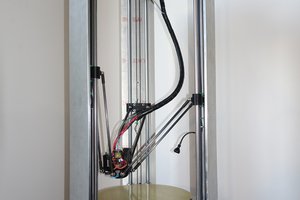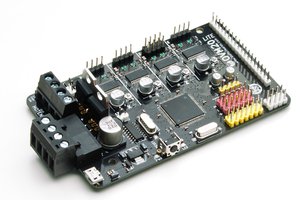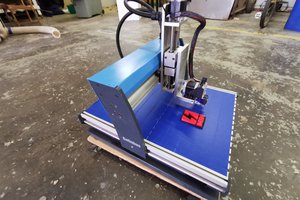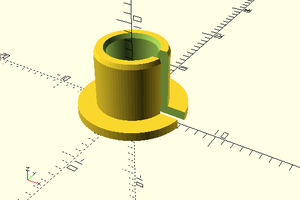If you got smashed playing multi-player xbox 360 games like 'Halo' or 'Call of Duty' in 2008 / 2009 by a gamer with the handle "Kernal BT"... then your opportunity for revenge has past you by. I've smashed my game unit in an epic tear-down and transformed it into a miniature 3D printer for under $75.00.

It's not too difficult to disassemble the unit into component parts. This gives you a chance to look at what has dominated your time in a more abstract way. As an engineer, I immediately see the useful galvanized metal frame and a DVD player with some moving mechanical motors. I continue by breaking out the DVD drive and use a Dremel to drill some holes in the thicker metal frame that will provide the mechanical structure of my newly fabricated 3D printer.
I've looked at various 3D printers for inspiring designs, but this post is a borderline exercise in building a robotic structure that will push your comfort zone.

Looking at designs of relevant 3D Printers always puts the project into perspective. Above is the mindmap overview for RepRap 3D printer components. Here are the overall design schematics of a RepRap 3D printer system with parts of both the infrastructure (Electrical and Mechanical including Extruder) and software functions that will be needed to get our printer to operate as intended.
Inventory
Here's the inventory that I have from the tear down. I avoid re-using the patented xbox chip sets, because I don't want to be banned from the professional gamer leagues in the future among other issues, but it is an easy substitute using an IoT device.

Before continuing on this journey you’re going to need knowledge of 'how to solder' and some additional parts that are not available from this initial gold mine. Now scavengers let's target what is missing:
- Additional DVD drive - uses of a secondary frame and stepper motor helps.
- Filament - ABS or PLA of various thickness ($20.00 USD)
- Hot-End of the system – ($7.99 USD)
- Extruder - Drive Gear grabs filament, Stepper Motor advances the filament, PTFE (Teflon ™) tube directs path and Idler holds pressure when applied to the 'hot-end' ($14.00 USD)
- Acrylic panel - Heated Bed (Alternative) as the target of delivery ($3.19 USD)
- Controller - IoT offering (i.e. Raspberry Pi or Arduino) - MKS Gen V1.4 ($35.00 USD)
- Stepper Driver - Precision motor control, connect a 4-wire stepper motor & microcontroller. (included in MKS GEN v1.4)
- Printer Control Software for calibration and coordination
Now if you're looking for a good place to acquire motors, just ask a molecular biology solution provider. Huh, I know you're thinking this is a mechanical build, not a biological creation. NEMA provides some great links to bio-medical imaging and sample preparation devices through the use of Miniature Linear Actuators, as a fore-shadow to a future post. Our focus here is the use of the NEMA stepper motors.
Mechanics

We are going to use the 3 motors to move the 'Hot-End' along the 3 Axis. XYZ are the reference axis that will require some calibration and adjusting of each motors.
Mounting an acrylic panel on top of the DVD Sled will serve as a Heated-Bed alternative. Try not to break the DVD sled that ejects the DVDs from the drive unit during disassembly.
Extruders
There are 2 major types of extruder designs, Direct Extruder or Bowden. The Direct Extruder is 'directly' attached to the hot-end. Bowden is where a tube, most commonly a section of PTFE (Teflon ™), extends from the extruder body to the hot end.
Extruder Feeder - referred to as the 'cold end'. I will deploy it in a Bowden fashion, and will advance the filament to the Hot-end while keeping the proper pressure within the tube. We will mount this feeder on the opposite side of the galvanized metal panel in a closer proximity to our filament spool. This will decrease the load required by the motors during operation as opposed to a Direct Extruder.

Motors and Fans, man!
Prepare the motors by soldering 4 cables to the A1, A3 & B3, B1 points...
Read more » Kernal BT
Kernal BT

 derethor
derethor
 Made In workshop
Made In workshop
 Christian Lerche
Christian Lerche